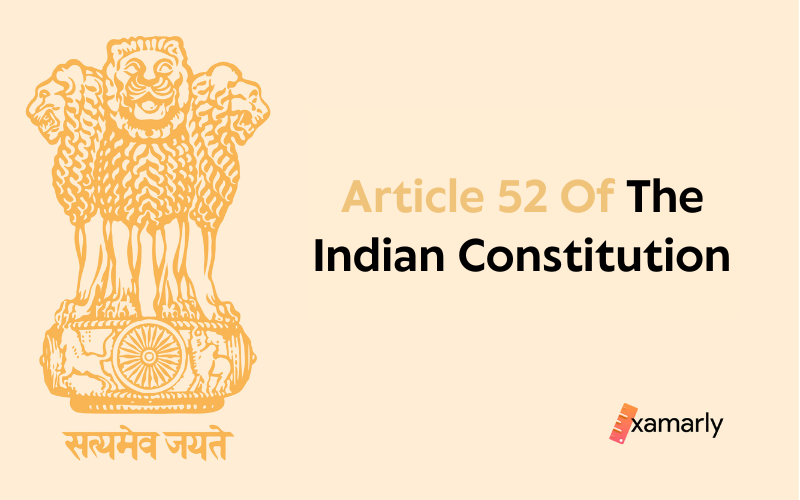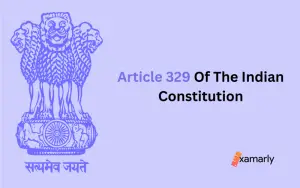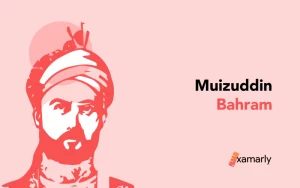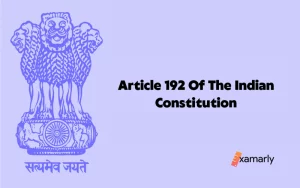Part V of the Constitution covers Article 52 of the Indian Constitution. A President of India is to be appointed, according to the law. The head of state for the Indian Republic is the President.
You can find additional information about Article 52 in the article that follows.
What Is Article 52 Of The Indian Constitution?
Article 52 of the constitution states that India shall have a President.
Key Facts
- The Head of State and representative of the entire country is the Indian President.
- The first Indian citizen is the president. However, the Indian Constitution does not specifically address it.
- The President of India is the most elevated power in the nation. It is according to the Republic of India’s order of precedence, which names representatives, administrators, and notables according to their rank in the Government of the nation.
The President Of India
The official head of the state of India is the President. The first citizen of the Indian State is also regarded as the President of India. Along with the Vice President, Attorney General of India, Prime Minister, and Council of Ministers, the President of India makes up the Union Executive. The Union Executive, which includes the President, is covered in Part V of the Constitution, which runs from Article 52 to Article 78. There shall be a President, according to Article 52.
Current President Of India: Droupadi Murmu
Droupadi Murmu, also known as Puti Biranchi Tudu, was born on June 20, 1958, in India and has been the country’s 15th president since July 25, 2022. She is the second female to maintain the appointment after Pratibha Patil. She is the first member of a tribal community to do so. She is the first President born in Independent India and the youngest person to hold the position. She held positions in the cabinet of the Government of Odisha between 2000 and 2004. It was before being elected president. She was a teacher at Rairangpur from 1983 to 1989 after serving as a clerk.
Also Read: Check out the linked articles for UPSC Preparation from the table given below.
Position of the President
President is a constitutional head, and his powers are formally vested in the constitution. He has certain responsibilities that he must fulfill in order to protect the constitution. He has many duties, but his primary function is to prevent unconstitutional decisions.
List of Presidents of India (1950-2022)
| Name | Tenure | Description |
| Rajendra Prasad | (13 May 1952 – 13 May 1957) (13 May 1957 – 13 May 1962) | He was twice elected president. Before being chosen for this position, he served as the constituent assembly’s president. |
| Sarvepalli Radhakrishnan | (13 May 1962 – 13 May 1967) | Radhakrishnan was a well-known author and philosopher. Additionally, he served as vice chancellor of the Banaras Hindu University and the Andhra University. |
| Zakir Hussain | (13 May 1967 – 3 May 1969) | He received the Padma Vibhushan as well as the Bharat Ratna award. A president with the shortest tenure who died while in office. |
| Varahagiri Venkata Giri | (3 May 1969 – 20 July 1969) (24 August 1969 – 24 August 1974) | He was selected to serve as India’s vice president in 1967. He served as president for a short while after Zakir Hussain unexpectedly passed away while in office. |
| Fakhruddin Ali Ahmed | (24 August 1974 – 11 February 1977) | During the Emergency, he served as president. The second president to pass away while in office. |
| Neelam Sanjiva Reddy | (25 July 1977 – 25 July 1982) | He was Andhra Pradesh’s first chief minister. He ran twice for president, becoming the youngest president to occupy Rashtrapati Bhavan. |
| Zail Singh | (25 July 1982 – 25 July 1987) | He served as both the Union Home Minister as well as the Chief Minister of Punjab. |
| Ramaswamy Venkataraman | 25 July 1987 – 25 July 1992 | He won the “Tamra Patra” for his involvement in the Indian independence movement. |
| Shankar Dayal Sharma | 25 July 1992 – 25 July 1997 | He served as both the Indian Minister of Communications and the Chief Minister of Madhya Pradesh. |
| Kocheril Raman Narayanan | 25 July 1997 – 25 July 2002 | He represented India as its ambassador to the United States of America, Thailand, Turkey, and China. |
| Avul Pakir Jainulabdeen Abdul Kalam | 25 July 2002 – 25 July 2007 | He was a key contributor to the creation of India’s nuclear and ballistic missile programs. He was also awarded the Bharat Ratna. |
| Pratibha Patil | 25 July 2007 – 25 July 2012 | She was India’s first female president. |
| Pranab Mukherjee | 25 July – 25 July 2017 | In 1997, he received the top parliamentary honor. In 2008, he also received the Padma Vibhushan. |
| Ram Nath Kovind | 25 July 2017 – 25 July 2022 | He became the Governor of Bihar. |
| Draupadi Murmu | 25 July 2022 – Incumbent | She previously held the office of governor of Jharkhand. |
Important Points – President of India
Following are some key aspects of the President and President Election that are usually asked in the UPSC examination and other government exams:
| Eligibility to hold the office of President of India | He should be an Indian national. He ought to be 35 years old at least. He ought to be eligible for election as a Lok Sabha member. He shouldn’t work for any federal, state, or other public organization in a paid capacity. |
| Term of Office of President of India | After the election, the president’s tenure in office lasts for five years. |
| Oath by | Chief Justice of India |
| Resignation to | Vice President of India |
| Re-election | Re-election to the office of President is possible. |
| Disputes Regarding the Election of the President are challenged in | Supreme Court of India |
| Immunities Enjoyed by President | It is impossible to detain or imprison the President of India. The President of India is not held personally liable for his official actions. |
| Impeachment | Can only be done on the basis of constitutional violations |
Key Facts about the President of India
Some information about the Indian President and previous Presidents who have served the nation is provided below. These facts frequently form the basis of questions in the nation’s top competitive exams.
- The president of India with the longest tenure was Dr. Rajendra Prasad. He served as President of the nation for two terms.
- The third Indian President, Zakir Hussain, had the shortest tenure. He died while working at his office.
- There were three interim Presidents in addition to the full-time Presidents shown in the table above. They were Mohammad Hidayatullah, Basappa Danappa Jatti, and Varahagiri Venkata Giri.
- Neelam Sanjiva Reddy served as Andhra Pradesh’s first Chief Minister in addition to becoming the nation’s youngest President.
- The first female president of India was Pratibha Patil.
- The procedure outlined in Article 61 of the Indian Constitution must be followed if the President of India intends to step down from office. In the event of resignation, the President must provide a handwritten letter to the Vice President.
- The elected representatives of the legislative bodies of the States and Union Territories, as well as members of the House of Parliament, elect the President.
Conclusion
As Dr. BR Ambedkar stated in the Constituent Assembly, the President of India holds the same rank as the King or Queen in the English Constitution. Despite not being the Executive, he is the head of the State.
FAQs
Which Article Says That There Is A President In India?
There must be a President of India, according to Article 52 of the Indian Constitution.
Who Is The First Woman To Become The President Of India?
On July 25, 2007, Smt. Pratibha Patil, the 12th president of India, took office, making history by becoming the first woman to hold the position. She brought with her a solid understanding of the law, a strong desire to improve the lives of the socially oppressed, and a wealth of legislative experience from both Houses of Parliament and the Maharashtra State Assembly. Also, the first Maharashtrian to hold the office of President was Pratibha Patil.
What Is The Term Of The President’s Office?
The President of India is required by Article 56 of the Indian Constitution to serve a five-year term beginning on the day he assumes office.
Can The President’s Office Be Vacant?
Yes, the office of the President can be vacant. This situation arises in the following situation. When the President dies, resigns, or is impeached, the office of the President becomes empty.
Who Does Not Take Part In The President’s Elections?
The elected members of the legislative council do not take part in the President’s election.






